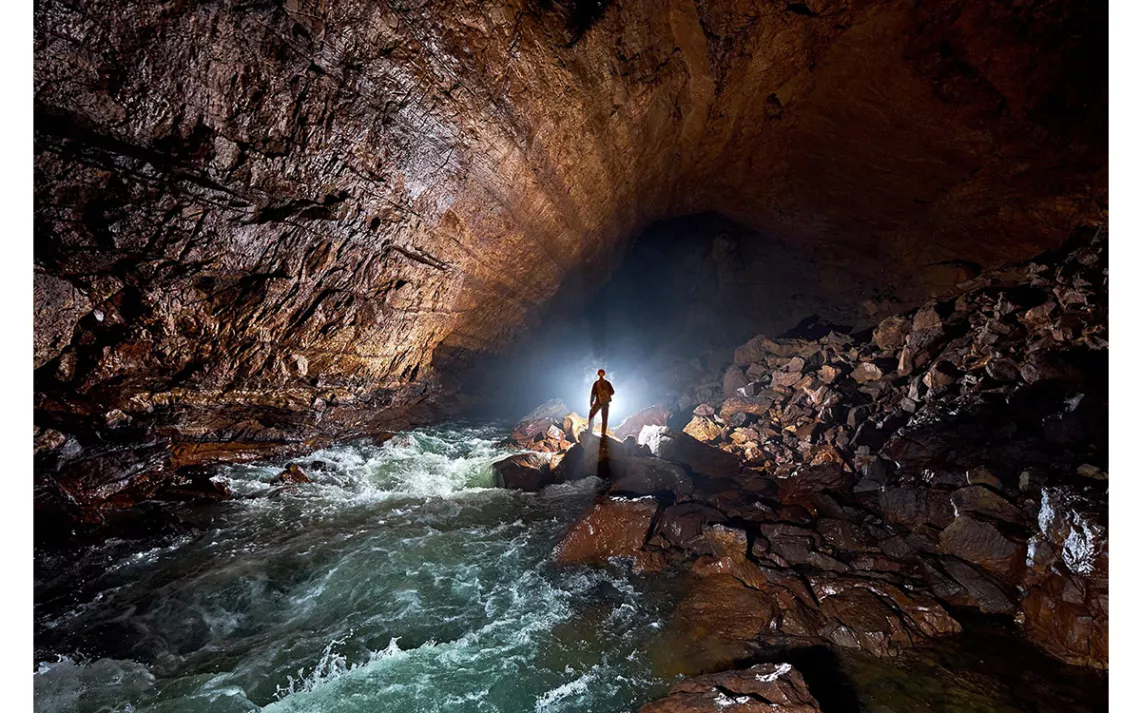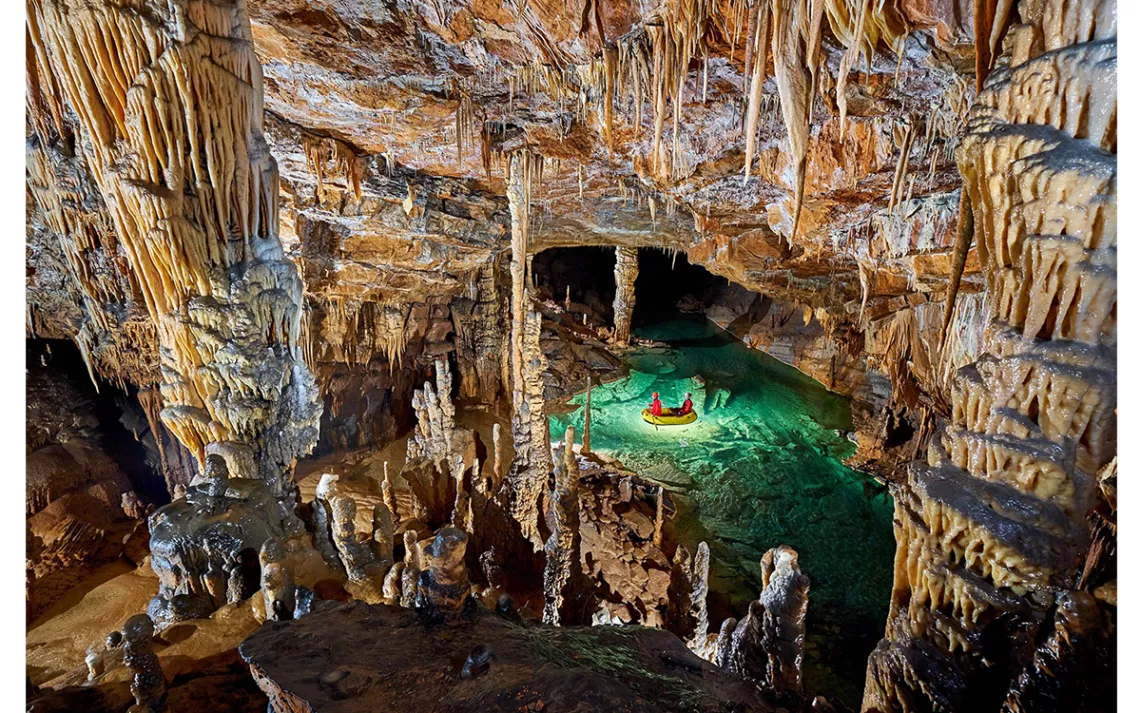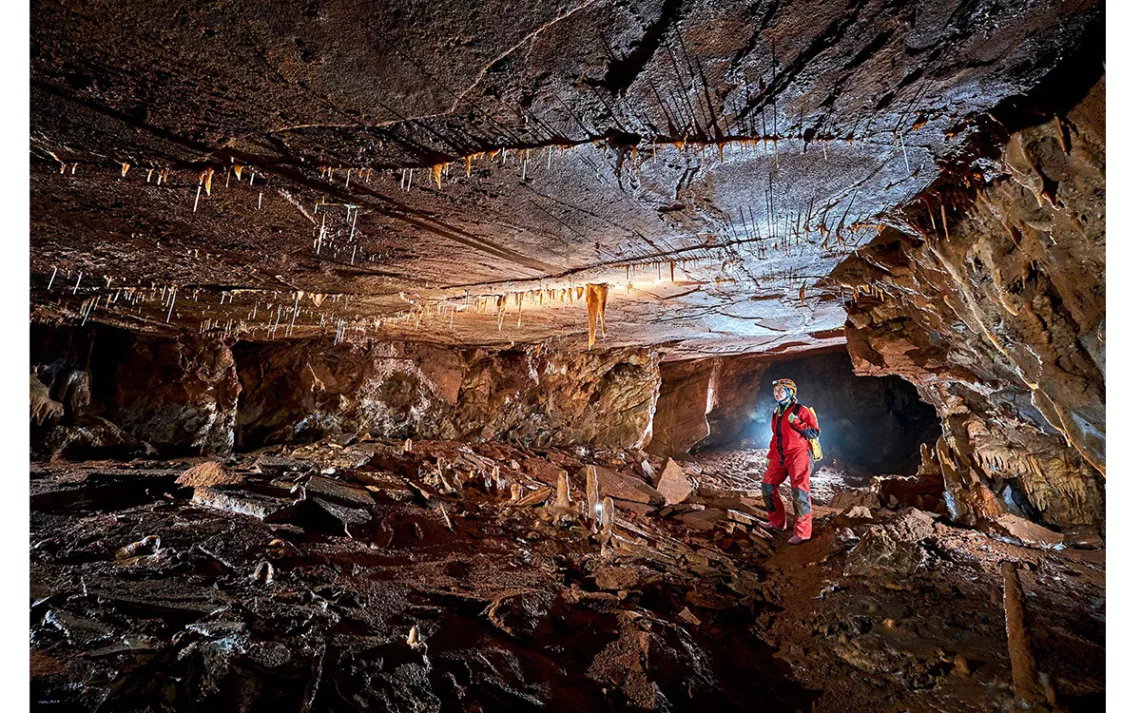A Journey to the Center of the Cave
Peter Gedei's photos capture the labyrinthine beauty of the "underworld"
Photos by Peter Gedei
For 30 years, Peter Gedei has been photographing some of the earth's most majestic caves. The subterranean journeyman is well known for documenting underground lake and river systems and karst and ice caves, among many others.
We spoke with him about the challenges of photographing in darkness, his favorite cave and why, and how to best preserve the earth's natural cave ecologies while taking in their magic and wonder.
*
Sierra: Where are you based?
Peter Gedei: I am a cave photographer from Slovenia, in the southern part of Europe. I was born in Ljubljana, the capital of Slovenia, in the center of the country. Slovenia has many natural attractions; we have access to the sea, mountains, and caves, of which there are currently over 13,500, and it takes a maximum of two hours from Ljubljana to reach any place in the country.
How did you get into photography?
I started delving into photography as early as elementary school. My father was a cameraman and amateur photographer, so my brother and I always had access to photographic techniques. We developed film ourselves at home in the darkroom. In high school, my brother introduced me to caves, and in 1987 I enrolled at the Železničar Cave Club in Ljubljana, of which I am still a member today.
How many years have you been spelunking?
This year, I’m marking the 30th anniversary of cave photography, and I have been intensively engaged in researching and searching for two years. Some people are interested in research, others in more scientific approaches, some in rescuing and technique. I am most taken by cave photography.
Why cave exploration?
Caves, besides the bottom of the sea, represent the last unexplored areas of our planet. It is basically the world below us. Discovering a place where there has never been a human being before is a wonderful feeling. Any further discovery of new parts of the cave is all the more exciting. Of course, it is our responsibility to act responsibly and make sure that such discoveries are made with as little cave damage as possible. Every human presence in the cave has consequences.
What was the scariest thing that happened to you in a cave?
Perhaps the most unpleasant was at the beginning of my caving career when we were still using carbide lamps for lighting. Because it was a flame lamp, you had to light such a light with a spark or a lighter, which I also had with me at the time. I was crawling down a narrow passage, which was more and more flooded with water as I continued, and I was in the water up to my neck. When I turned to go back, my carbide turned off and the lighter was soaked, of course. Because none of my friends knew where I was, I had to go back alone in complete darkness about 20 meters. I hit the rocks fairly strongly several times and kept losing orientation. It could end up much worse.
What do most photographers not know about shooting caves that is different from shooting nature?
The biggest differences are mainly in the conditions in the cave. Cave photography is basically studio photography, where you place the light sources in the great natural studio. In doing so, you are hindered by moisture, mud, darkness, and of course most of all, you have to be most careful not to damage the cave space. Because no photo is worth the damage to the cave.
What was your favorite cave and why?
If I had to choose only one cave, this would certainly be the cave Križna jama (Cross Cave) in Slovenia. With a length of over eight kilometers, it is one of the longest Slovenian caves, and it is interesting because of its extraordinary diversity. It is considered to be one of the best preserved tourist caves through which flows a beautiful emerald-green underground river. The cave is not lighted; the visit is only possible with boats because most of the cave is a water tunnel, which is only interrupted by the sinter dams and underground lakes. The cave is beautifully decorated and branched out, and is also known for its many cave animals. The cave ends with a siphon that divers have not yet been able to completely explore, but it connects to the next cave, Nova Križna jama, which is one of the most protected caves in Slovenia.
Do you have a photographic philosophy or purpose?
The caves hide many things, and not only sinter columns of various colors and shapes. To me the most impressive are the spaces, be it huge halls, spacious abysses, a tunnel’s distinct shapes, or features that are rarely seen. These creations of nature are imprinted on your memory, and you realize that many of them you will see only once in your lifetime, when you first visited that cave. When taking a photo, I am always taken by the challenge of how to illuminate a space which we cannot even imagine on the surface and to do it in such a way that the cave is still recognizable and those who will never visit it can also experience it.
Anything else you think our audience of environmentalists and nature lovers should know?
Beside cave animals, cavers are the only cave visitors who can damage the cave environment, that's why we want to try to minimize the impact of our visits. Caving schools are increasingly devoting themselves to the conservation of caves and cave environments, and we are also trying to inform the interested public. The pollution of the caves goes beyond the surface; awareness that by irresponsible behavior we are destroying the water circuit must become a common rule. As a photographer, I try to bring the cave world closer to all who do not know it and to inform people that in addition to our everyday world, there is also an underworld. If you show them a beautiful photo, people will remember the cave as a place that is worth keeping intact.
 The Magazine of The Sierra Club
The Magazine of The Sierra Club









